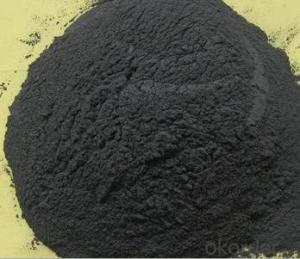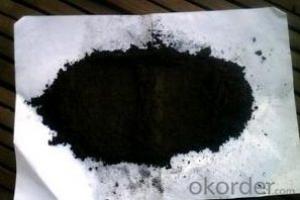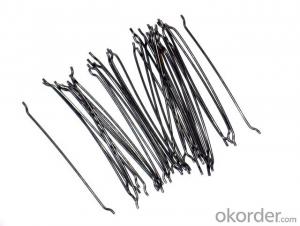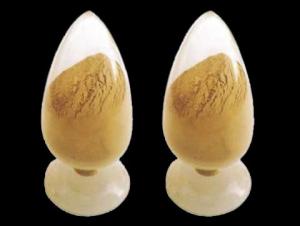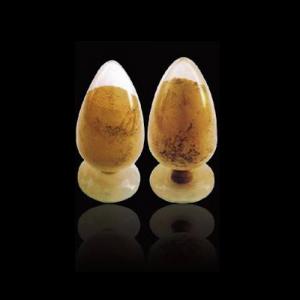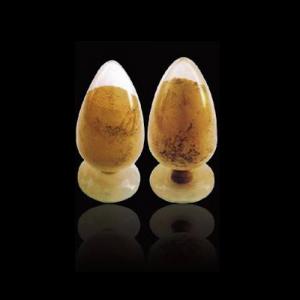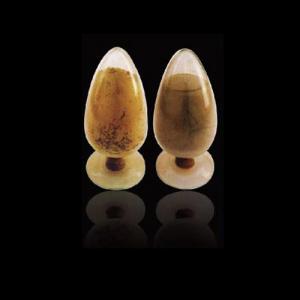Raw Carbon Material Made by Insulation Material
- Loading Port:
- Shekou
- Payment Terms:
- TT OR LC
- Min Order Qty:
- 20 m.t
- Supply Capability:
- 1000 m.t/month
OKorder Service Pledge
OKorder Financial Service
You Might Also Like
Factory Background
The factory is majorly running and operating carbon additive (pitch coke, calcined petroleum coke and anthracite), low nitrogen carbon additive, and brake pad making material. Company is the long term supplier of Sinosteel Corporation, Shanghai Carbon Corporation, the plant of SGL Group the Carbon Company in China and some largest special carbon products producing plants.
YUAI also supplies huge amout of high quality carbon additive and graphite carbon additive to steel plants, foundries and ferrotungsten plants. YUAI has been assigned by BAO STEEL as the only organization for processing pitch coke for export purpose. The group’s major products are constantly exported to Japan, Korea, Malaysia, South East Asia countries, Europe and America, which receive praises by our consumers.
The group has invested numbers of calcinators in Anhui China to ensure the capability of producing and processing huge amount of carbon additive. Further investment is on process. According to the orders from customers, YUAI is able to processing and providing different specifications of carbon additive and other products. To provide best quality of products and to offer customers most satisfied service is YUAI’s operating objectives.
Calcined Petroleum Coke
FC:98.5%min,
S:0.5%max
A:0.8%max
V:0.7%max
Mositure:0.5%max
Size:1-5mm
This product is mainly used in steel-making and foundry. Calcined Petroleum Coke
Calcined Petroleum Coke comes from delayed coke which extracted from oil refinery. Although Calcined Petroleum Coke contains a little bit higher level of sulfur and nitrogen than pitch coke, the price advantage still makes it widely used during steel-making and founding as a kind of carbon additive/carburant.
Technology:
Laborary Equpment
In our lab,we has a high precision balance,mullfe furnace,sample making machine, dring box,sulfur measurement instrument and other calibratiing equipments.As a result,before deliverung to our customers,our products have to pass a strict test to ensure the quality and components.The testing reports will be sent to our customers to confirm untill they satisfy with it.
Packaging & Delivery
Packaging Detail:25kg paper bag into 1t weaving bag 5kg, 10kg and 20kg weaving bag into 1t weaving bag 25kg weaving bag put on pallet covered with entanglement wrap product direct into packing bag 25kg paper bag put on pallet covered with entanglement Wrap 25kg weaving bag into 1t weaving bag.
Delivery Details: 7 days
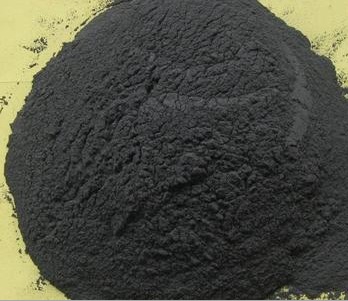

- Q:How do monolithic refractories prevent thermal radiation in the iron and steel industry?
- Monolithic refractories prevent thermal radiation in the iron and steel industry by providing a high level of insulation. They are specifically designed to withstand high temperatures and reduce heat transfer through radiation. By forming a protective barrier around the furnaces and other equipment, monolithic refractories minimize the loss of heat through thermal radiation, thereby improving energy efficiency and reducing energy consumption in the iron and steel production process.
- Q:What are the factors affecting the thermal expansion of monolithic refractories?
- The thermal expansion of monolithic refractories is influenced by several factors. These factors include the chemical composition of the refractory material, particle size, temperature, thermal history, porosity, binder content, and thermal shock. 1. The thermal expansion of the refractory material is significantly influenced by its chemical composition. Different chemical elements and compounds have varying coefficients of thermal expansion. For instance, materials with high levels of silica generally have lower coefficients of thermal expansion compared to those with higher concentrations of alumina. 2. The particle size distribution of the refractory material can also impact its thermal expansion. Smaller particle sizes result in higher thermal expansion due to increased surface area and greater particle contact. 3. The temperature at which the monolithic refractory is exposed plays a crucial role in its thermal expansion. As the temperature increases, the particles gain more kinetic energy, leading to increased movement and expansion. Different refractory materials exhibit significant expansion within specific temperature ranges. 4. The thermal history of the refractory material, including its heating and cooling cycles, can influence its thermal expansion behavior. Repeated heating and cooling cycles can induce microstructural changes in the material, affecting its thermal expansion properties. 5. The porosity of the monolithic refractory also affects its thermal expansion. Higher porosity generally results in higher thermal expansion due to the presence of voids and gaps within the material. 6. The type and amount of binder used in monolithic refractories impact their thermal expansion. Different binders have different coefficients of thermal expansion, which can influence the overall expansion behavior of the material. 7. Rapid temperature changes, such as quenching or exposure to alternating heating and cooling, can cause thermal shock in the refractory material. This can lead to cracks, spalling, and changes in thermal expansion behavior. Understanding these factors is essential when selecting the appropriate monolithic refractory material for specific applications. The thermal expansion characteristics directly affect the performance and longevity of the refractory in high-temperature environments.
- Q:How are monolithic refractories different from conventional refractories?
- Monolithic refractories differ from conventional refractories in several ways. Firstly, conventional refractories are typically made from pre-formed shapes such as bricks or tiles, while monolithic refractories are unshaped and can be installed by casting, gunning, or ramming. This allows for greater flexibility in design and installation, as monolithic refractories can be shaped to fit any complex geometry or size requirement. Secondly, monolithic refractories have a higher degree of thermal shock resistance compared to conventional refractories. This means that they can withstand rapid changes in temperature without cracking or spalling. This property is particularly important in applications where the refractory is exposed to extreme temperature variations, such as in furnaces or kilns. Furthermore, monolithic refractories have superior corrosion resistance, which makes them more suitable for environments with acidic or alkaline conditions. They are also known for their excellent mechanical strength and abrasion resistance, making them ideal for applications where the refractory is subjected to high mechanical stresses or wear. Lastly, monolithic refractories offer better energy efficiency due to their lower thermal conductivity. This means that they can retain heat more effectively, resulting in reduced energy consumption and cost savings. Overall, the main differences between monolithic refractories and conventional refractories lie in their installation methods, thermal shock resistance, corrosion resistance, mechanical strength, and energy efficiency. These factors make monolithic refractories a preferred choice in many industrial applications where flexibility, durability, and performance are crucial.
- Q:How do monolithic refractories mitigate heat loss in iron and steel operations?
- Monolithic refractories mitigate heat loss in iron and steel operations by creating a strong and continuous lining that insulates the furnace or kiln, reducing the transfer of heat to the surrounding environment. This lining is made of a single, seamless material, which eliminates joints or gaps that could allow heat to escape. Additionally, monolithic refractories have high thermal conductivity and low thermal expansion, allowing them to withstand extreme temperatures while minimizing heat loss.
- Q:How are monolithic refractories different from traditional refractories?
- Monolithic refractories are different from traditional refractories in terms of their composition, installation method, and performance characteristics. Firstly, monolithic refractories are composed of a single material, as the name suggests, whereas traditional refractories are typically made up of multiple materials. This single material composition of monolithic refractories allows for better control over their properties and performance. Secondly, the installation of monolithic refractories is different from traditional refractories. Traditional refractories are usually installed in the form of bricks or precast shapes, which are assembled together to form the desired lining. On the other hand, monolithic refractories are supplied in a ready-to-use form, such as a dry mix or a suspension, which is then poured, sprayed, or gunned into place. This makes the installation process of monolithic refractories faster and more efficient. Lastly, monolithic refractories offer superior performance characteristics compared to traditional refractories. Monolithic refractories have better thermal shock resistance, higher hot strength, and improved resistance to chemical attacks. Additionally, they can be more easily repaired or patched compared to traditional refractories, which often require the replacement of entire bricks or shapes. Overall, the main differences between monolithic refractories and traditional refractories lie in their composition, installation method, and performance characteristics. Monolithic refractories offer better control over properties, easier installation, and superior performance, making them a preferred choice in many industrial applications.
- Q:How do monolithic refractories contribute to the overall efficiency of ladles and tundishes?
- Monolithic refractories play a crucial role in enhancing the overall efficiency of ladles and tundishes in several ways. Firstly, monolithic refractories offer superior thermal insulation, reducing heat losses and enhancing heat retention within the ladles and tundishes. This helps in maintaining the desired temperature of the molten metal for extended periods, minimizing energy consumption and ensuring consistent casting quality. Secondly, monolithic refractories provide excellent resistance to chemical corrosion and erosion from molten metals and slag, thereby extending the service life of ladles and tundishes. This reduces the frequency of refractory repairs or replacements, leading to cost savings and increased operational efficiency. Additionally, monolithic refractories can be easily installed or repaired, saving time and labor compared to traditional brick or precast refractory lining methods. This contributes to minimizing downtime during maintenance or relining activities, allowing for continuous production and maximizing overall productivity. Overall, monolithic refractories enhance the efficiency of ladles and tundishes by improving thermal insulation, increasing resistance to chemical corrosion, reducing maintenance downtime, and extending the service life of these essential equipment in the metal casting process.
- Q:What are the quality control measures for monolithic refractories in the iron and steel industry?
- To ensure the efficiency and safety of the production process in the iron and steel industry, it is crucial to implement quality control measures for monolithic refractories. These measures encompass a range of inspections and tests throughout the manufacturing and installation stages. To begin with, rigorous testing is conducted on the raw materials used for monolithic refractories. This involves analyzing the chemical composition, particle size distribution, and impurity content. These tests are essential to ensure that the ingredients meet the required specifications and are suitable for the intended application. During the production process, the focus of quality control measures lies in monitoring the mixing and blending of the materials. This ensures that a homogeneous mixture is achieved, preventing any inconsistencies in the final product. Additionally, the density and viscosity of the refractory castables or plastics are checked to maintain the desired physical properties. Once the monolithic refractories are manufactured, they undergo several performance tests. These tests involve determining properties such as cold crushing strength, modulus of rupture, and thermal conductivity. These characteristics are crucial in ensuring that the refractories can withstand the extreme temperatures and mechanical stress present in the iron and steel industry. Aside from laboratory testing, quality control measures also involve on-site inspections during installation. This includes verifying the correct application techniques, such as proper vibration, curing, and drying procedures. It is of utmost importance to ensure that the monolithic refractories are applied correctly to achieve optimal performance and longevity. Furthermore, regular sampling and monitoring of the refractories' performance are carried out during operation. This allows for the early detection of any signs of degradation or wear, enabling proactive maintenance and replacement before any significant issues arise. In conclusion, the quality control measures for monolithic refractories in the iron and steel industry encompass comprehensive testing, monitoring, and inspection procedures. These measures are implemented to guarantee the reliability, durability, and efficiency of the refractories, ultimately contributing to the smooth operation of the iron and steel production processes.
- Q:How do monolithic refractories impact the overall productivity of iron and steel operations?
- Monolithic refractories play a crucial role in enhancing the overall productivity of iron and steel operations. These refractories are specially designed to withstand extreme temperatures, chemical reactions, and mechanical stress that occur during the production process. One significant impact of monolithic refractories on productivity is their ability to reduce downtime and increase operational efficiency. The high thermal conductivity and resistance to thermal shock of these refractories enable them to maintain stable temperatures within the furnace, preventing sudden temperature fluctuations that can cause equipment failure and production delays. This, in turn, ensures a continuous and uninterrupted production process, leading to increased productivity. Moreover, monolithic refractories offer superior corrosion resistance, preventing the erosion and degradation of furnace linings. This resistance to chemical attacks from molten metals and slag helps prolong the lifespan of the refractory lining, reducing the frequency of repairs and replacements. Consequently, the reduced maintenance requirements translate into less downtime and higher productivity for iron and steel operations. Additionally, monolithic refractories facilitate faster installation and repair processes compared to traditional brick refractories. Their fluid-like nature allows for easy application and shaping, resulting in shorter installation and curing times. This quick turnaround time minimizes production interruptions during repairs or maintenance, further enhancing overall productivity. Furthermore, the use of monolithic refractories can optimize energy consumption in iron and steel operations. Their excellent insulation properties help retain heat within the furnace, reducing heat loss and energy waste. This leads to improved energy efficiency and cost savings, contributing to increased productivity and profitability. In summary, monolithic refractories have a significant impact on the overall productivity of iron and steel operations. Their ability to withstand extreme conditions, reduce downtime, resist corrosion, facilitate quick repairs, and optimize energy consumption all contribute to improved efficiency and productivity in the industry.
- Q:What are the main applications of monolithic refractories in the iron and steel industry?
- Monolithic refractories play a crucial role in the iron and steel industry due to their various applications. Some of the main applications of monolithic refractories in this industry include: 1. Blast Furnaces: Blast furnaces are a key component in the iron and steel industry, where iron ore is converted into molten iron. Monolithic refractories are used to line the inner walls of blast furnaces, providing insulation and protection against the extreme temperatures and corrosive environment. They help maintain the integrity and efficiency of the furnace, ensuring smooth operation and prolonged service life. 2. Ladles and Tundishes: Ladles and tundishes are vessels used for transporting molten metal from the blast furnace to the next processing stage. Monolithic refractories are employed to line these vessels, as they can withstand the high temperatures and chemical reactions that occur during metal transfer. They prevent heat loss, minimize metal contamination, and improve the overall efficiency of the process. 3. Steelmaking Furnaces: Monolithic refractories are extensively used in various types of steelmaking furnaces, such as electric arc furnaces (EAFs) and basic oxygen furnaces (BOFs). These furnaces require lining materials that can withstand extreme temperatures, chemical reactions, and mechanical stresses. Monolithic refractories provide excellent thermal insulation, erosion resistance, and structural integrity, enabling efficient and reliable steel production. 4. Continuous Casting: Continuous casting is a widely used method for producing steel in large quantities. During this process, molten steel is continuously poured into a water-cooled mold, solidifying it into solid steel billets or slabs. Monolithic refractories are used to line the walls and floor of the mold, ensuring thermal insulation and preventing the adhesion of the solidified steel to the mold. They help maintain the desired shape of the casting and improve the quality of the final product. 5. Reheating Furnaces: Reheating furnaces are employed to heat steel billets or slabs before further processing. Monolithic refractories are utilized to line the walls and roof of these furnaces, as they can withstand high temperatures and thermal cycling. They provide insulation, reduce heat loss, and improve the efficiency of the reheating process. Overall, monolithic refractories are essential in the iron and steel industry as they offer high-temperature resistance, chemical stability, and mechanical strength. They contribute to the longevity and efficiency of various equipment and processes, ensuring smooth operations and high-quality steel production.
- Q:How do monolithic refractories improve the efficiency of ladle and tundish preheating furnaces?
- Monolithic refractories play a crucial role in improving the efficiency of ladle and tundish preheating furnaces. These refractories are made from a single material and are designed to be easily installed, repaired, and replaced, making them highly versatile and cost-effective. One of the main ways monolithic refractories contribute to the efficiency of these furnaces is through their excellent thermal insulation properties. These refractories have low thermal conductivity, which means they can effectively retain heat and prevent it from escaping the furnace. This insulation capability minimizes heat loss and ensures that the preheating process is carried out efficiently, reducing energy consumption and costs. Furthermore, monolithic refractories have high thermal shock resistance, which is crucial in ladle and tundish preheating furnaces. These furnaces are subjected to rapid temperature changes when molten metal is poured into them, and this can cause conventional refractories to crack or fail. However, monolithic refractories are designed to withstand thermal shock, ensuring that they remain intact and maintain their insulating properties even under extreme conditions. This durability enhances the overall efficiency of the preheating process by reducing downtime and maintenance requirements. Moreover, monolithic refractories provide a smooth and uniform lining surface, which helps to improve heat transfer within the furnace. The absence of joints or seams reduces the risk of heat leakage and ensures that heat is evenly distributed throughout the lining. This promotes uniform heating of the ladle or tundish, allowing for more efficient preheating and better control of the temperature. In summary, the use of monolithic refractories in ladle and tundish preheating furnaces results in improved efficiency due to their excellent thermal insulation properties, high thermal shock resistance, and ability to provide a smooth and uniform lining. These refractories help to minimize heat loss, reduce energy consumption, and enhance the overall performance of the preheating process.
1. Manufacturer Overview |
|
|---|---|
| Location | |
| Year Established | |
| Annual Output Value | |
| Main Markets | |
| Company Certifications | |
2. Manufacturer Certificates |
|
|---|---|
| a) Certification Name | |
| Range | |
| Reference | |
| Validity Period | |
3. Manufacturer Capability |
|
|---|---|
| a)Trade Capacity | |
| Nearest Port | |
| Export Percentage | |
| No.of Employees in Trade Department | |
| Language Spoken: | |
| b)Factory Information | |
| Factory Size: | |
| No. of Production Lines | |
| Contract Manufacturing | |
| Product Price Range | |
Send your message to us
Raw Carbon Material Made by Insulation Material
- Loading Port:
- Shekou
- Payment Terms:
- TT OR LC
- Min Order Qty:
- 20 m.t
- Supply Capability:
- 1000 m.t/month
OKorder Service Pledge
OKorder Financial Service
Similar products
New products
Hot products
Hot Searches
Related keywords
